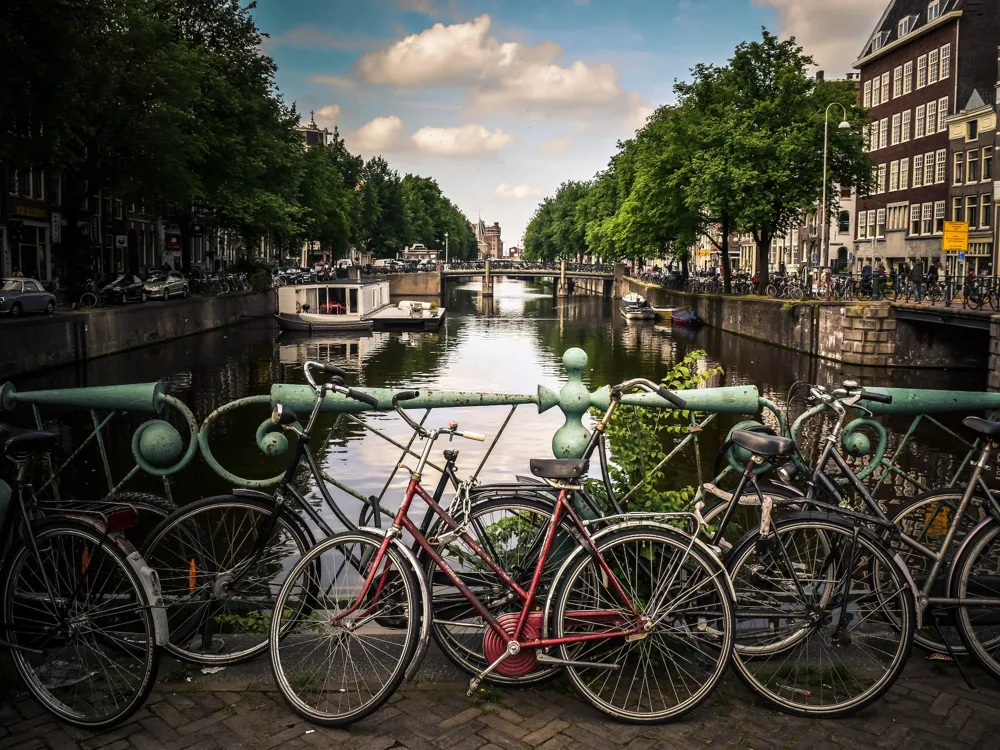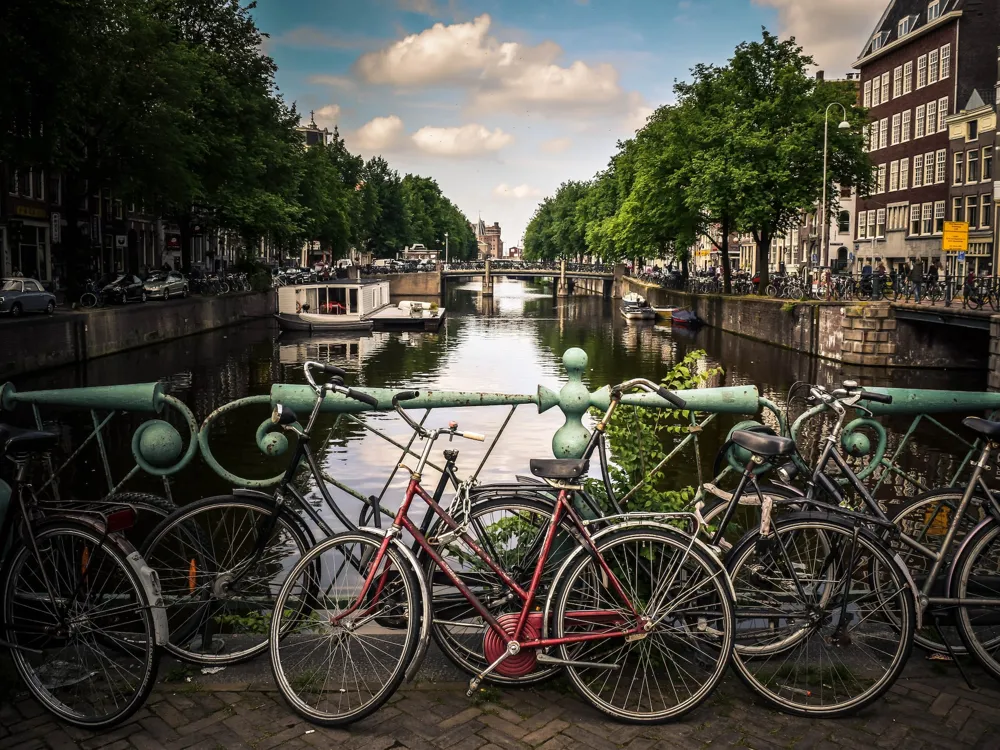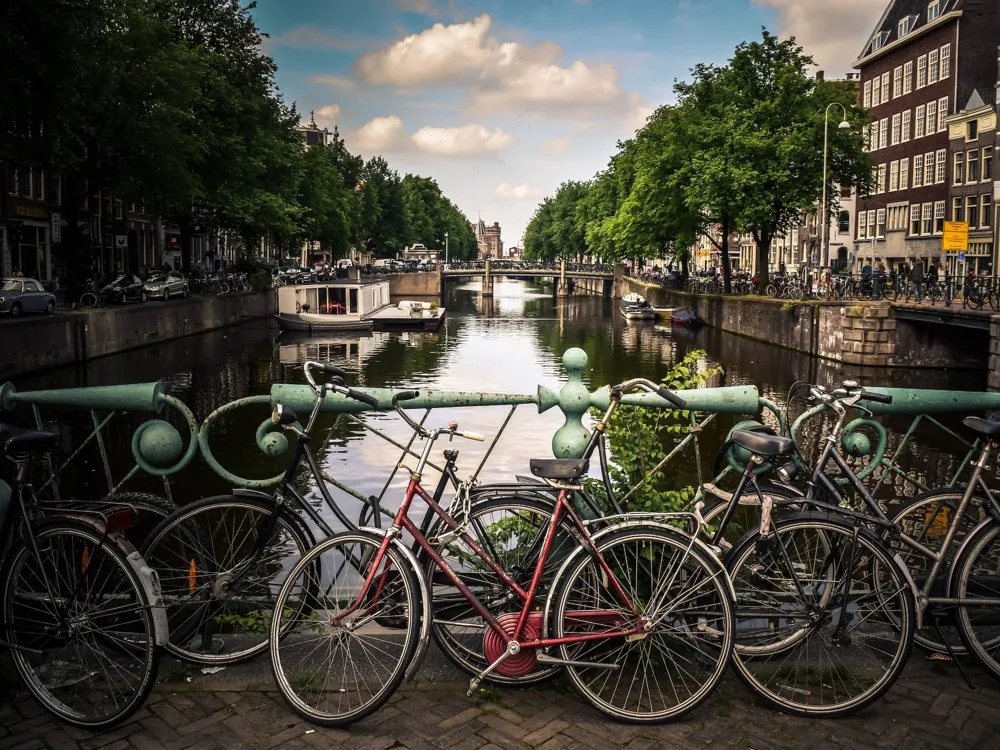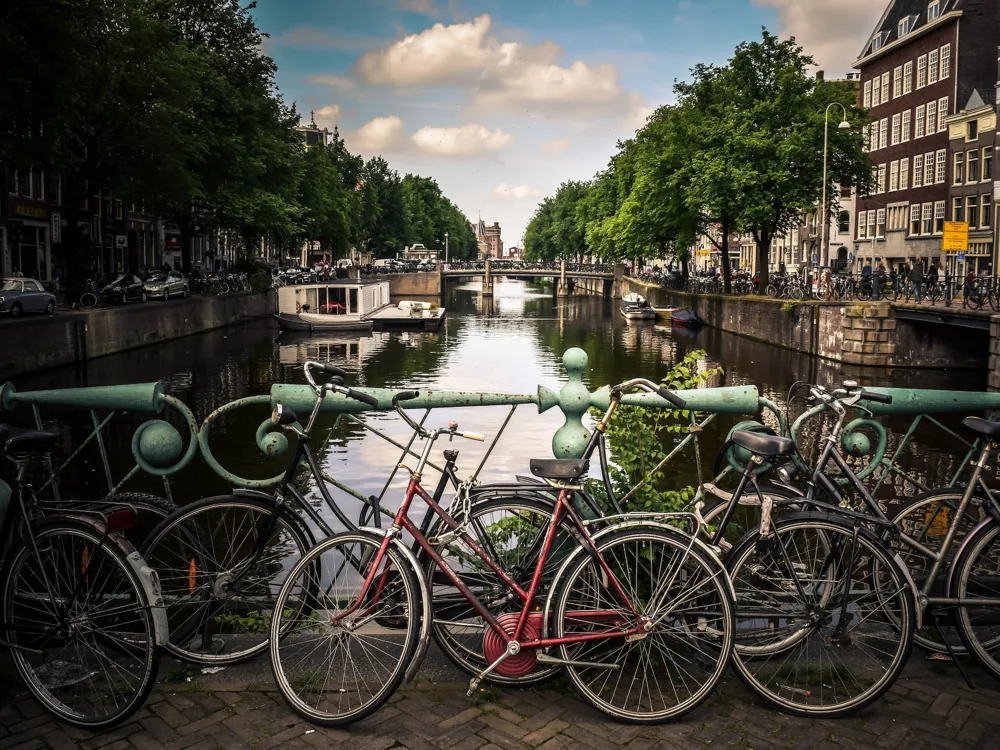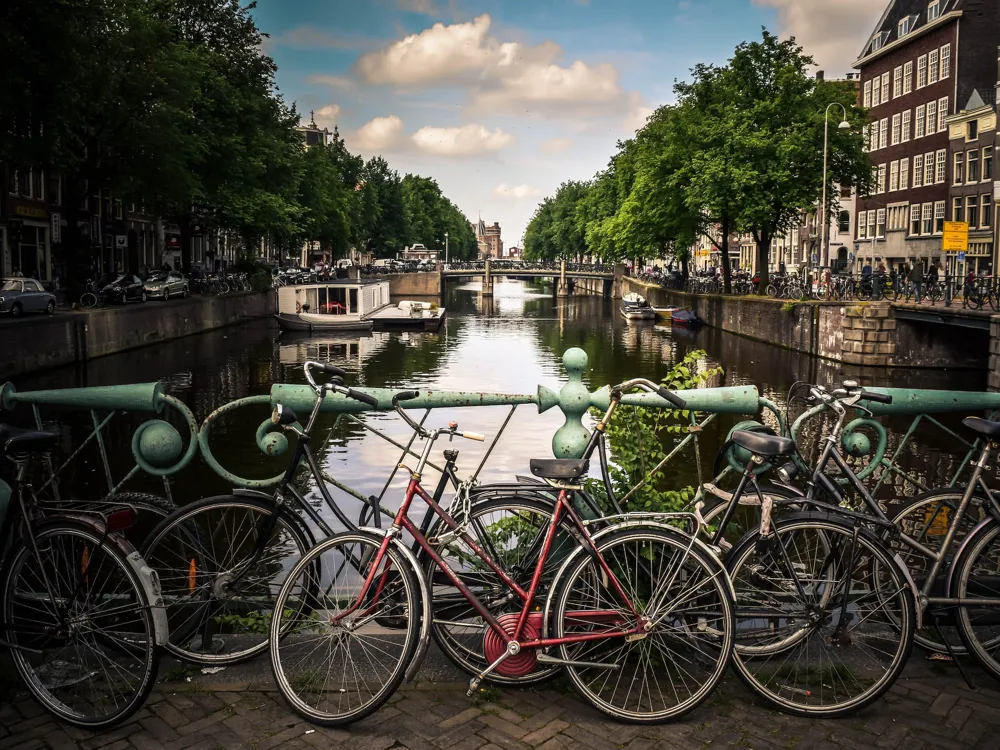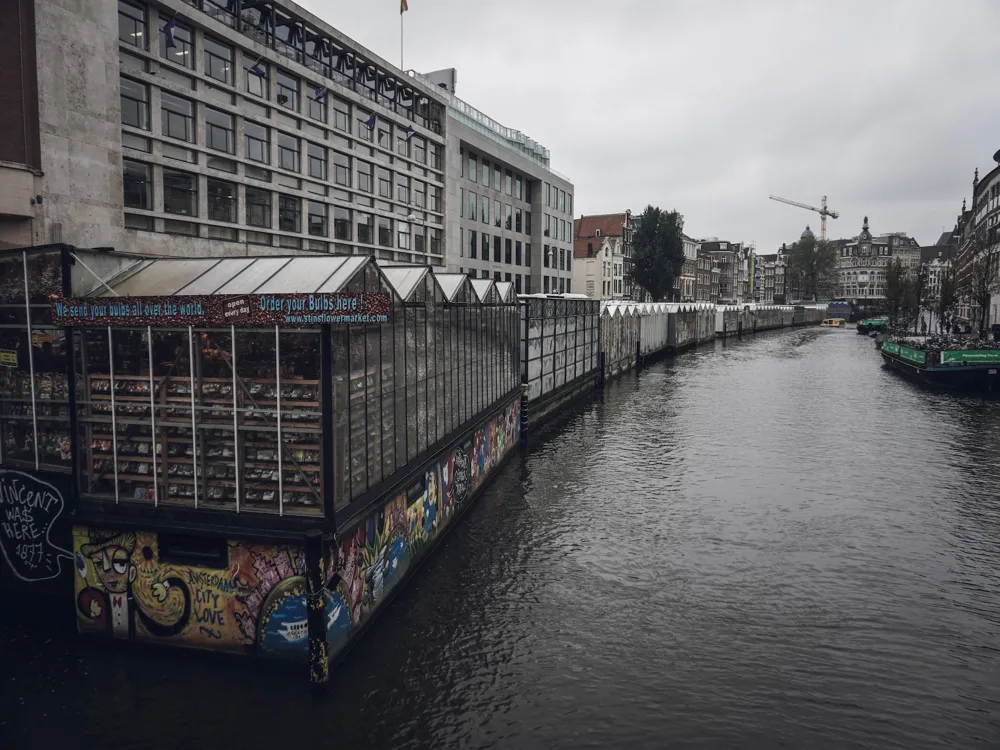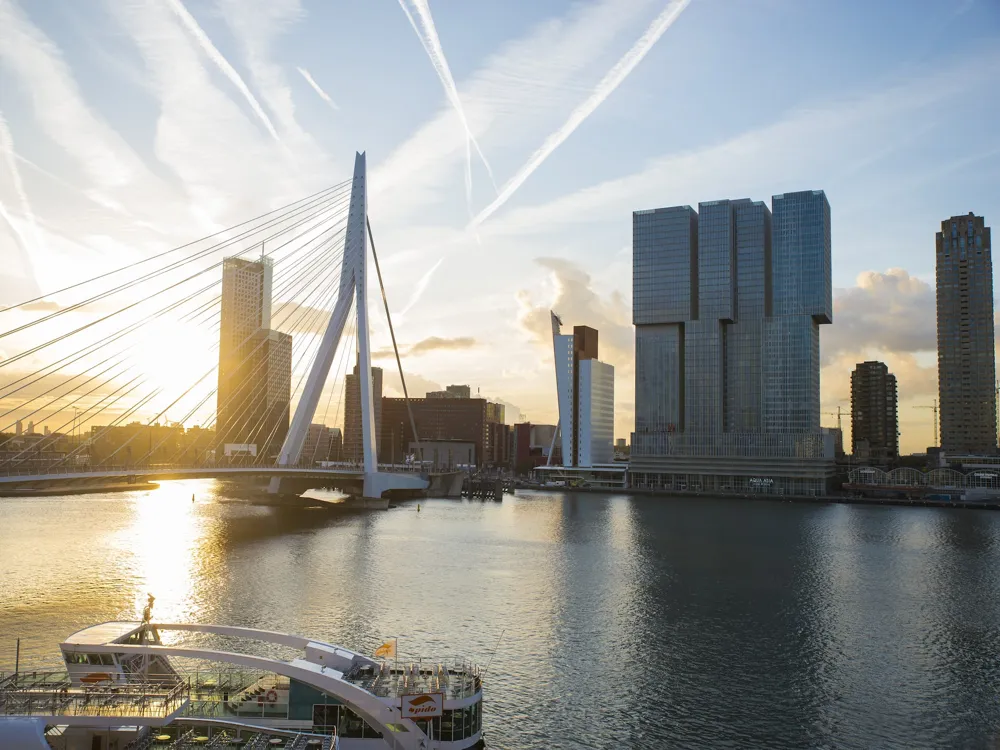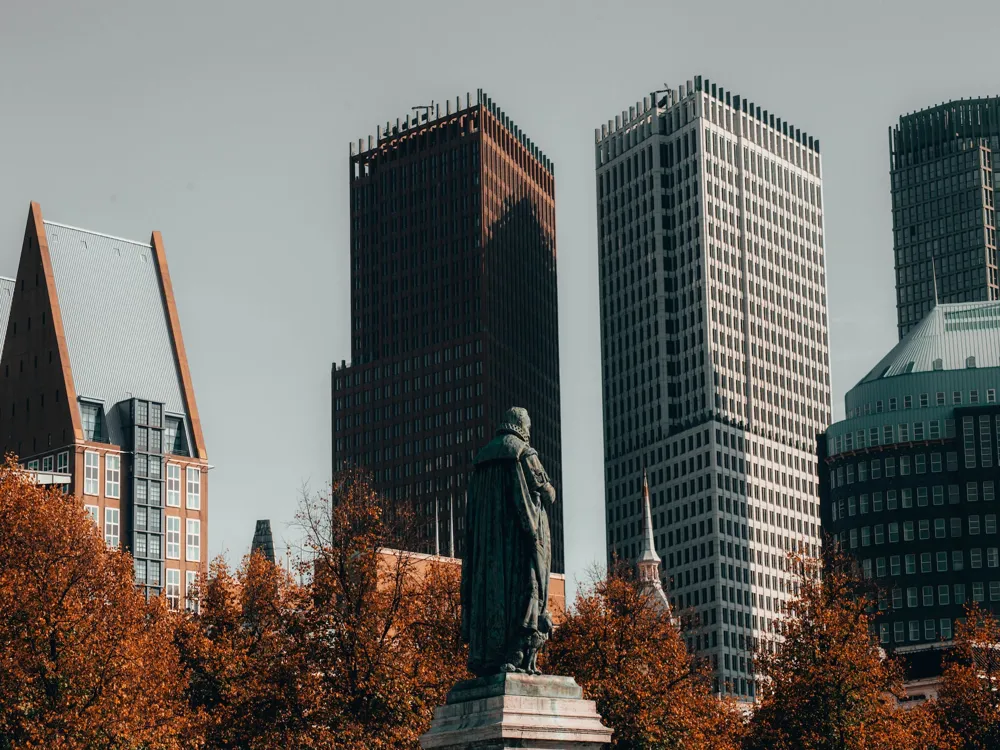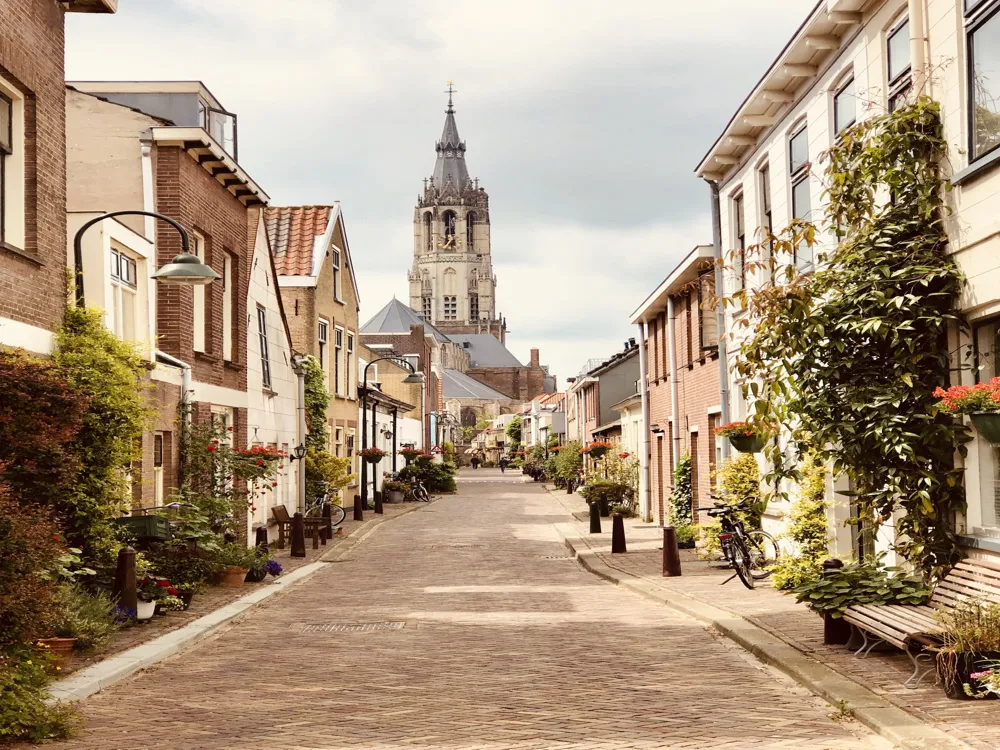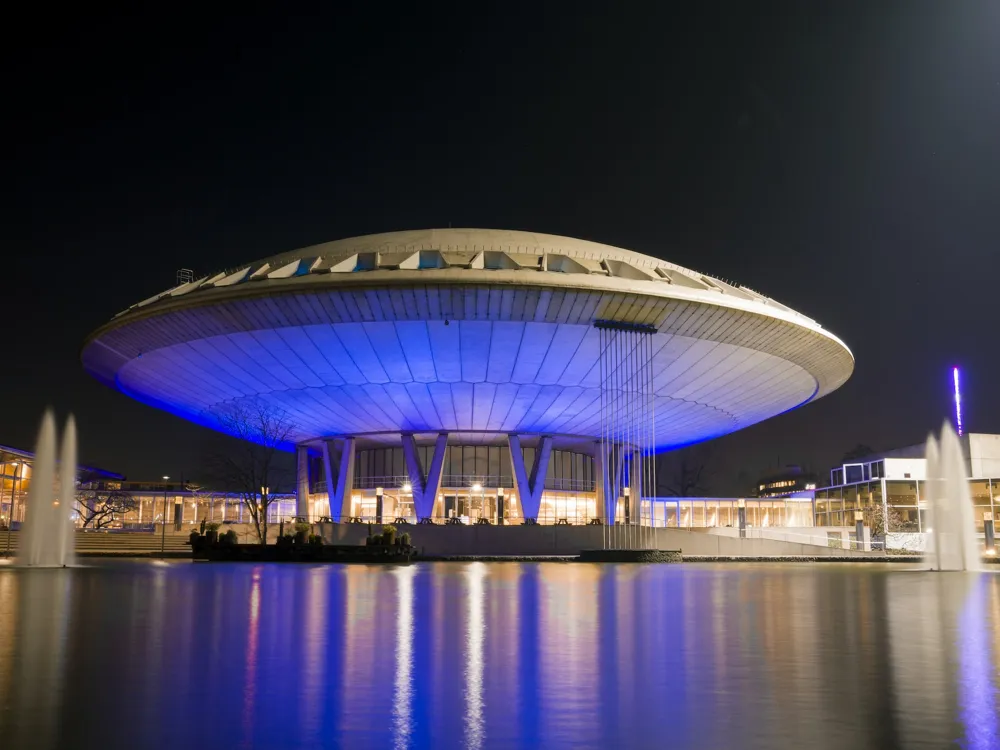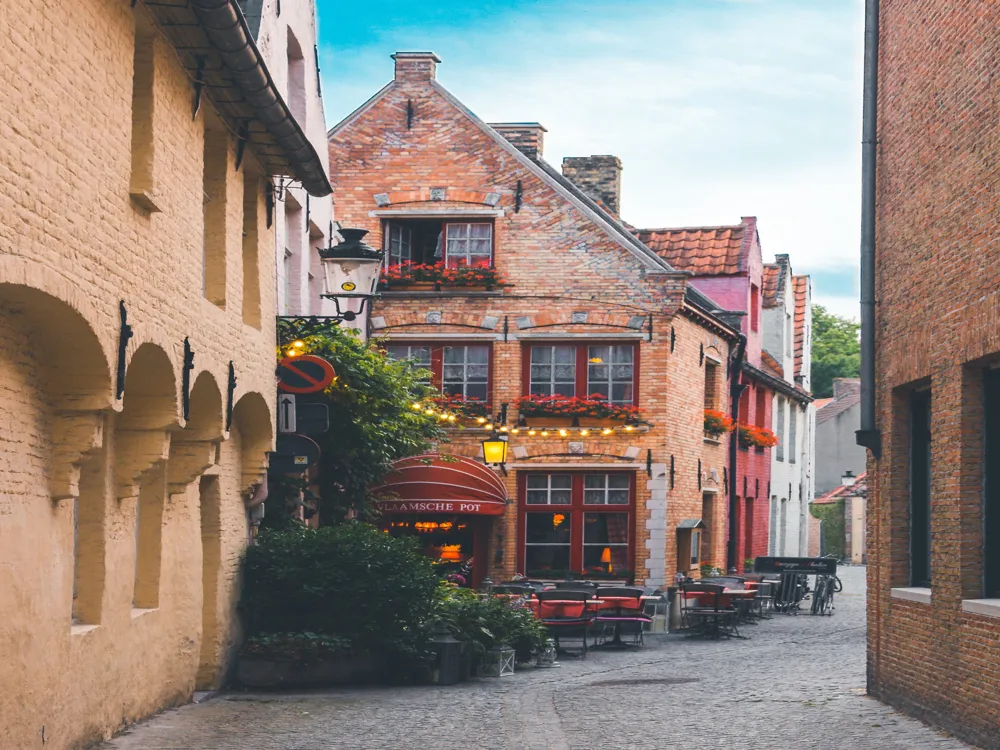The Portuguese Synagogue, located in the heart of Amsterdam, is a testament to the city's rich Jewish heritage. Built in the 17th century, this magnificent edifice stands as a symbol of the religious freedom that Jews found in Amsterdam during a time when they faced persecution in many parts of Europe. The synagogue is also known as 'Esnoga,' a Ladino word for synagogue. It was primarily used by the Sephardic Jews who fled the Iberian Peninsula during the Spanish and Portuguese Inquisitions. Today, the Portuguese Synagogue is not only a functioning place of worship but also a popular tourist attraction, drawing visitors from around the globe to marvel at its historical and architectural significance. The architecture of the Portuguese Synagogue is a blend of Dutch classicism and Sephardic style, reflecting the cultural fusion of the Sephardic Jewish community in Amsterdam. The building's exterior is characterized by its large, sandstone façade, unornamented and imposing, symbolizing the community's desire for discretion during a time of uncertainty. Inside, the synagogue's spacious interior is illuminated by natural light from large windows, a feature uncommon in synagogues of that era. The wooden benches, brass chandeliers, and the ark housing the Torah scrolls, all original to the building, add to the synagogue's timeless ambiance. The lack of electricity, even today, means that services are conducted by candlelight, preserving the authentic 17th-century atmosphere. Before visiting the Portuguese Synagogue, check the opening hours as they vary throughout the year. Remember that the synagogue is an active place of worship and may be closed to visitors during Jewish holidays and Shabbat (sunset Friday to sunset Saturday). Visitors are advised to dress modestly out of respect for the religious nature of the site. Men are required to cover their heads, and kippahs are provided at the entrance. Additionally, maintain a quiet demeanor within the synagogue to preserve the sanctity of the space. Photography is usually allowed inside the Portuguese Synagogue, but it's best to verify current policies upon arrival. Avoid using flash photography, as it can be disruptive during services or to other visitors. The Portuguese Synagogue is easily accessible by public transportation. The closest tram stop is Waterlooplein, served by several tram lines. For visitors driving, there are parking facilities nearby, though parking in Amsterdam can be challenging and expensive. Alternatively, Amsterdam's bike-friendly streets offer a unique way to reach the synagogue, reflecting the city's vibrant cycling culture. Read MoreOverview of the Portuguese Synagogue Amsterdam
Architecture of the Portuguese Synagogue Amsterdam
Tips When Visiting the Portuguese Synagogue Amsterdam
Planning Your Visit
Dress Code and Conduct
Photography
How To Reach the Portuguese Synagogue Amsterdam
Portuguese Synagogue Amsterdam
Amsterdam
₹ 37,193 onwards
View amsterdam Packages
Weather :
Tags : Synagogue
Timings : Monday - Sunday: 10:00 AM - 5:00 PM
Entry Fee : Adults: EUR 18
Students, CJP-Holders: EUR 10
13 to 17 Y: EUR 9
6 to 12 Y: EUR 6
Children under 6 years of age, Friends of the Jewish Museum and holders of one of the following passes: Museum card, I amsterdam City Card, ICOM, Stadspas, VriendenLoterij VIP Card, and members of the Rembrandt Society: Free
Planning a Trip? Ask Your Question
Also Refered As:
Esnoga or Snoge
Amsterdam Travel Packages
View All Packages For Amsterdam
Top Hotel Collections for Amsterdam

Private Pool

Luxury Hotels

5-Star Hotels

Pet Friendly
Top Hotels Near Amsterdam
Other Top Ranking Places In Amsterdam
View All Places To Visit In amsterdam
Faq on Amsterdam
What is the significance of the Portuguese Synagogue in Amsterdam?
The Portuguese Synagogue is significant as one of the most important historical Jewish landmarks in Amsterdam, representing the rich history and heritage of the Sephardic Jewish community.
Can tourists visit the Portuguese Synagogue in Amsterdam?
Yes, the Portuguese Synagogue is open to visitors, offering guided tours that provide insights into its history, architecture, and cultural significance.
What is the architectural style of the Portuguese Synagogue in Amsterdam?
The Portuguese Synagogue features a magnificent example of 17th-century Sephardic Jewish architecture, characterized by its grandeur, simplicity, and lack of interior decoration.
Is the Portuguese Synagogue still used for religious purposes?
Yes, the Portuguese Synagogue continues to serve as an active place of worship for the Jewish community in Amsterdam, hosting religious ceremonies, services, and events.
What are the opening hours of the Portuguese Synagogue in Amsterdam?
The opening hours of the Portuguese Synagogue vary, but it is generally open to visitors during certain hours on weekdays and weekends. It's advisable to check the official website for the most up-to-date information.
View amsterdam Packages
Weather :
Tags : Synagogue
Timings : Monday - Sunday: 10:00 AM - 5:00 PM
Entry Fee : Adults: EUR 18
Students, CJP-Holders: EUR 10
13 to 17 Y: EUR 9
6 to 12 Y: EUR 6
Children under 6 years of age, Friends of the Jewish Museum and holders of one of the following passes: Museum card, I amsterdam City Card, ICOM, Stadspas, VriendenLoterij VIP Card, and members of the Rembrandt Society: Free
Planning a Trip? Ask Your Question
Esnoga or Snoge
Amsterdam Travel Packages
View All Packages For Amsterdam
Top Hotel Collections for Amsterdam

Private Pool

Luxury Hotels

5-Star Hotels

Pet Friendly
Top Hotels Near Amsterdam
Other Top Ranking Places In Amsterdam
Faq on Amsterdam
What is the significance of the Portuguese Synagogue in Amsterdam?
The Portuguese Synagogue is significant as one of the most important historical Jewish landmarks in Amsterdam, representing the rich history and heritage of the Sephardic Jewish community.
Can tourists visit the Portuguese Synagogue in Amsterdam?
Yes, the Portuguese Synagogue is open to visitors, offering guided tours that provide insights into its history, architecture, and cultural significance.
What is the architectural style of the Portuguese Synagogue in Amsterdam?
The Portuguese Synagogue features a magnificent example of 17th-century Sephardic Jewish architecture, characterized by its grandeur, simplicity, and lack of interior decoration.
Is the Portuguese Synagogue still used for religious purposes?
Yes, the Portuguese Synagogue continues to serve as an active place of worship for the Jewish community in Amsterdam, hosting religious ceremonies, services, and events.
What are the opening hours of the Portuguese Synagogue in Amsterdam?
The opening hours of the Portuguese Synagogue vary, but it is generally open to visitors during certain hours on weekdays and weekends. It's advisable to check the official website for the most up-to-date information.







